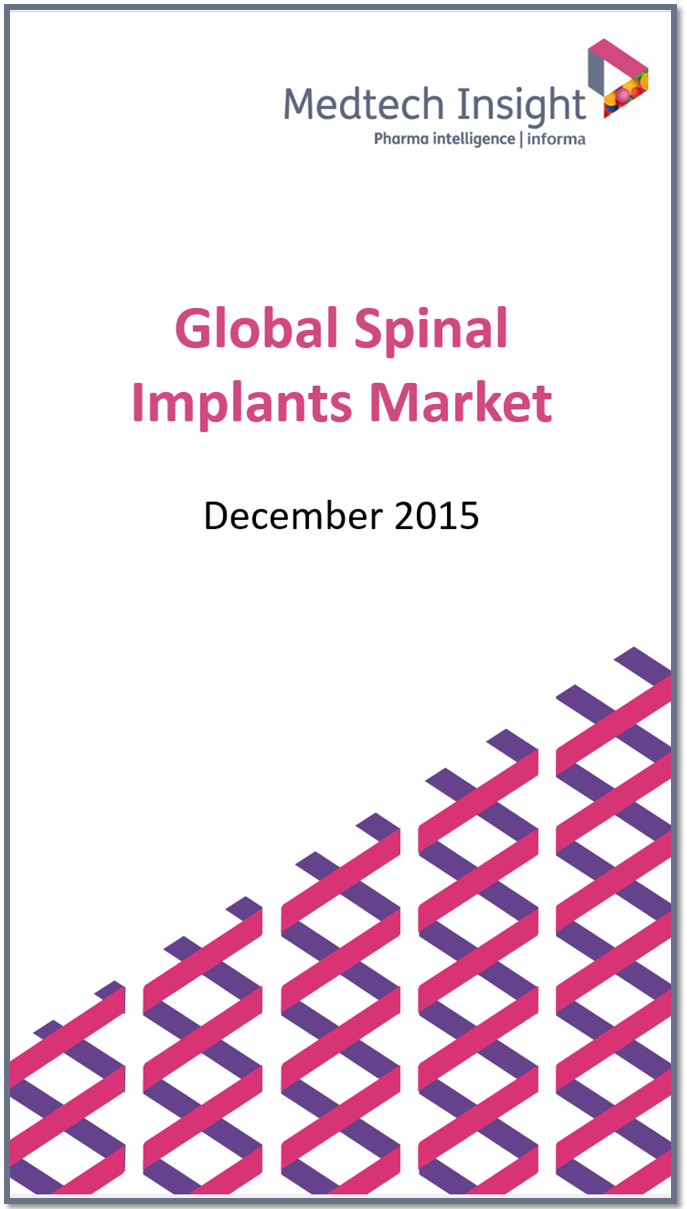Report Detail

Purchase Price: $5,250.00
Global Spinal Implants Market, December 2015
Spine disorders are a leading driver of healthcare costs worldwide, and range in severity from mild pain and loss of feeling to extreme pain and paralysis. These disorders are primarily caused by degenerative conditions in the spine, deformity, tumors and trauma. Degenerative disc disease (DDD) typically is caused by gradual disc damage and often results in disc herniation and chronic back or neck pain; the disease is most common among otherwise healthy people in their 30s or 40s and affects approximately half of the population in the 7 major markets aged 40 and older.
This report provides a summary of the nearly $5 billion global spinal implants market, which (for the purposes of this report) includes the following selected product segments in the top 5 markets of the European Union (France, Germany, Italy, Spain, the U.K.), as well as Japan and the U.S.:
i.) artificial cervical and lumbar discs;
ii.) dynamic stabilization devices (interspinous process spacers and pedicle screw-based dynamic stabilization devices);
iii.) other motion preserving devices (annulus repair);
iv.) spinal fusion instrumentation (anterior cervical plates, interbody fusion devices and pedicle screws); and,
v.) vertebral compression fracture treatments (balloon kyphoplasty/percutaneous vertebral augmentation systems and vertebroplasty products).
The largest segment—spinal fusion instrumentation—comprised the vast majority of sales, at approximately 57.4% of the total market, followed by dynamic stabilization devices (18.8%), vertebral compression fraction treatment products (14.4%), artificial cervical/lumbar discs (9.3%), and the very small but emerging market of annulus repair products (at less than 1%). Overall, this large and burgeoning market is growing at a better-than-average compound annual rate of nearly 5%.
This dynamic, new report from Medtech Insight includes a profile of dozens of selected leading products; clinical study results; a comprehensive market analysis, including expected segment growth, drivers/limiters, and market forecasts (from 2015-2020); and competitive analysis, including estimated 2015 market share by supplier. Emerging technologies (cell-based therapies, tissue engineering products and biologics) are also profiled.

